Xuanwu Yin
Gumiho: A Hybrid Architecture to Prioritize Early Tokens in Speculative Decoding
Mar 13, 2025Abstract:Speculative decoding (SPD) aims to accelerate the auto-regressive token generation process of a target Large Language Model (LLM). Some approaches employ a draft model with multiple heads to predict a sequence of future tokens, where each head handles a token in the sequence. The target LLM verifies the predicted sequence and accepts aligned tokens, enabling efficient multi-token generation. However, existing methods assume that all tokens within a sequence are equally important, employing identical head structures and relying on a single-generation paradigm, either serial or parallel. To this end, we theoretically demonstrate that initial tokens in the draft sequence are more important than later ones. Building on this insight, we propose Gumiho, a hybrid model combining serial and parallel heads. Specifically, given the critical importance of early tokens, we employ a sophisticated Transformer architecture for the early draft heads in a serial configuration to improve accuracy. For later tokens, we utilize multiple lightweight MLP heads operating in parallel to enhance efficiency. By allocating more advanced model structures and longer running times to the early heads, Gumiho achieves improved overall performance. The experimental results demonstrate that our method outperforms existing approaches, fully validating its effectiveness.
Týr-the-Pruner: Unlocking Accurate 50% Structural Pruning for LLMs via Global Sparsity Distribution Optimization
Mar 12, 2025Abstract:Structural pruning enhances hardware-agnostic inference efficiency for large language models (LLMs) but often struggles to maintain performance. Local pruning performs efficient layer-by-layer compression but ignores global topology. Global pruning has the potential to find the optimal solution although resource-intensive. However, existing methods tend to rank structural saliency uniformly, ignoring inter-structure dependencies and failing to achieve end-to-end optimization. To address these limitations, we propose T\'yr-the-Pruner, an efficient end-to-end search-based global structural pruning framework. This framework constructs a supernet by repeatedly applying local pruning across a range of sparsity ratios to each layer in an LLM, with the core goal of determining the optimal sparsity distribution under a target overall sparsity ratio. Concretely, we introduce an effective local pruning and an expectation error accumulation approach to improve supernet construction. Furthermore, we employ an iterative prune-and-search strategy with coarse-to-fine sparsity granularity to ensure efficient search convergence. Experimental results show that T\'yr-the-Pruner achieves state-of-the-art structural pruning, retaining 97% of the dense model's performance while removing a challenging 50% of Llama-3.1-70B's parameters.
Jakiro: Boosting Speculative Decoding with Decoupled Multi-Head via MoE
Feb 10, 2025Abstract:Speculative decoding (SD) accelerates large language model inference by using a smaller draft model to predict multiple tokens, which are then verified in parallel by the larger target model. However, the limited capacity of the draft model often necessitates tree-based sampling to improve prediction accuracy, where multiple candidates are generated at each step. We identify a key limitation in this approach: the candidates at the same step are derived from the same representation, limiting diversity and reducing overall effectiveness. To address this, we propose Jakiro, leveraging Mixture of Experts (MoE), where independent experts generate diverse predictions, effectively decoupling correlations among candidates. Furthermore, we introduce a hybrid inference strategy, combining autoregressive decoding for initial tokens with parallel decoding for subsequent stages, and enhance the latter with contrastive mechanism in features to improve accuracy. Our method significantly boosts prediction accuracy and achieves higher inference speedups. Extensive experiments across diverse models validate the effectiveness and robustness of our approach, establishing a new SOTA in speculative decoding. Our codes are available at https://github.com/haiduo/Jakiro.
MIPI 2024 Challenge on Demosaic for HybridEVS Camera: Methods and Results
May 08, 2024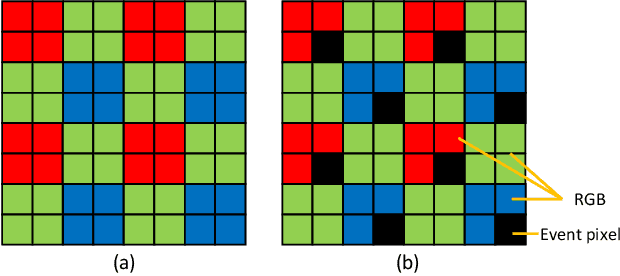
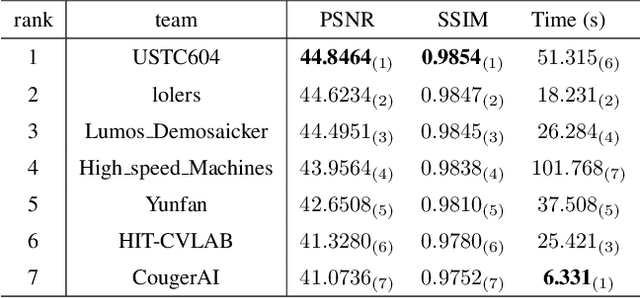

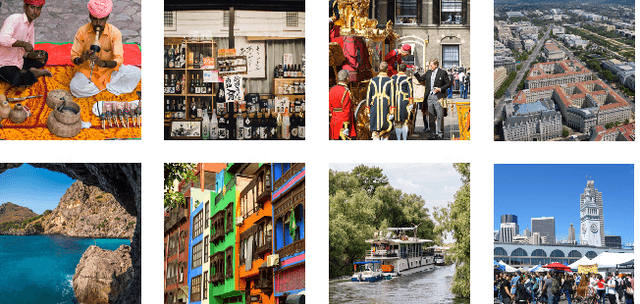
Abstract:The increasing demand for computational photography and imaging on mobile platforms has led to the widespread development and integration of advanced image sensors with novel algorithms in camera systems. However, the scarcity of high-quality data for research and the rare opportunity for in-depth exchange of views from industry and academia constrain the development of mobile intelligent photography and imaging (MIPI). Building on the achievements of the previous MIPI Workshops held at ECCV 2022 and CVPR 2023, we introduce our third MIPI challenge including three tracks focusing on novel image sensors and imaging algorithms. In this paper, we summarize and review the Nighttime Flare Removal track on MIPI 2024. In total, 170 participants were successfully registered, and 14 teams submitted results in the final testing phase. The developed solutions in this challenge achieved state-of-the-art performance on Nighttime Flare Removal. More details of this challenge and the link to the dataset can be found at https://mipi-challenge.org/MIPI2024/.
Real-Time 4K Super-Resolution of Compressed AVIF Images. AIS 2024 Challenge Survey
Apr 25, 2024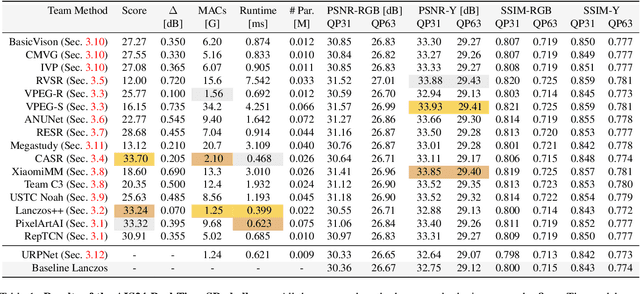

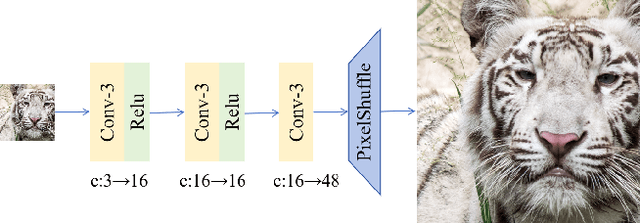
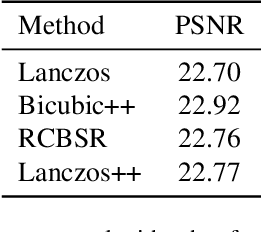
Abstract:This paper introduces a novel benchmark as part of the AIS 2024 Real-Time Image Super-Resolution (RTSR) Challenge, which aims to upscale compressed images from 540p to 4K resolution (4x factor) in real-time on commercial GPUs. For this, we use a diverse test set containing a variety of 4K images ranging from digital art to gaming and photography. The images are compressed using the modern AVIF codec, instead of JPEG. All the proposed methods improve PSNR fidelity over Lanczos interpolation, and process images under 10ms. Out of the 160 participants, 25 teams submitted their code and models. The solutions present novel designs tailored for memory-efficiency and runtime on edge devices. This survey describes the best solutions for real-time SR of compressed high-resolution images.
Deep RAW Image Super-Resolution. A NTIRE 2024 Challenge Survey
Apr 24, 2024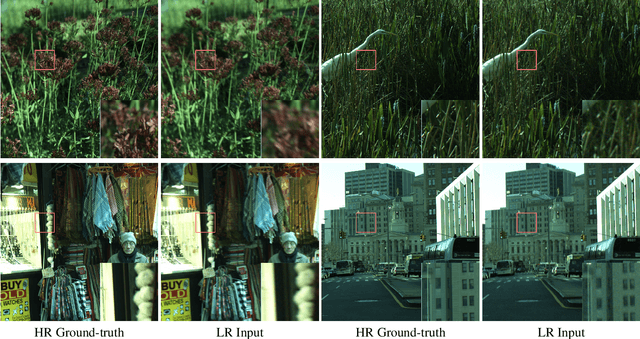

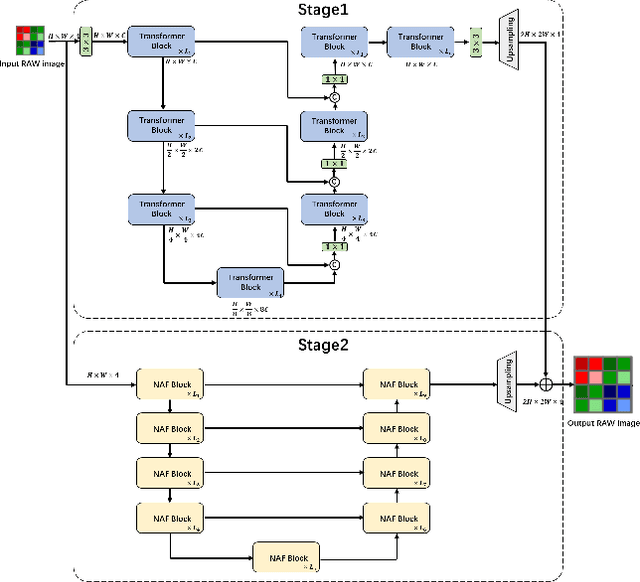
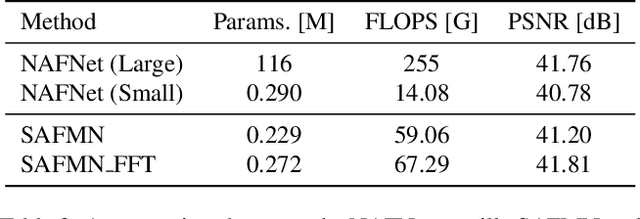
Abstract:This paper reviews the NTIRE 2024 RAW Image Super-Resolution Challenge, highlighting the proposed solutions and results. New methods for RAW Super-Resolution could be essential in modern Image Signal Processing (ISP) pipelines, however, this problem is not as explored as in the RGB domain. Th goal of this challenge is to upscale RAW Bayer images by 2x, considering unknown degradations such as noise and blur. In the challenge, a total of 230 participants registered, and 45 submitted results during thee challenge period. The performance of the top-5 submissions is reviewed and provided here as a gauge for the current state-of-the-art in RAW Image Super-Resolution.
The Ninth NTIRE 2024 Efficient Super-Resolution Challenge Report
Apr 16, 2024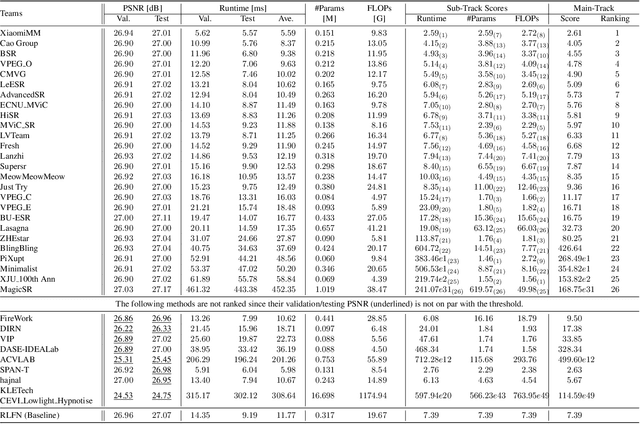
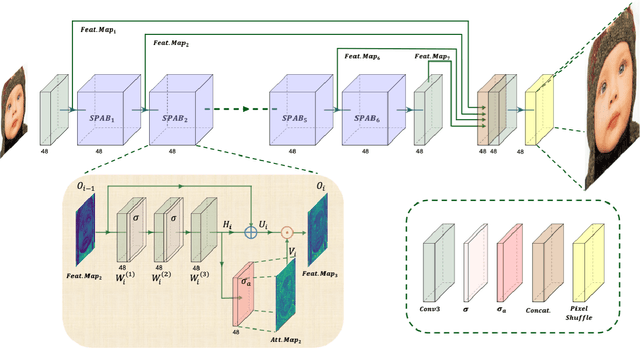


Abstract:This paper provides a comprehensive review of the NTIRE 2024 challenge, focusing on efficient single-image super-resolution (ESR) solutions and their outcomes. The task of this challenge is to super-resolve an input image with a magnification factor of x4 based on pairs of low and corresponding high-resolution images. The primary objective is to develop networks that optimize various aspects such as runtime, parameters, and FLOPs, while still maintaining a peak signal-to-noise ratio (PSNR) of approximately 26.90 dB on the DIV2K_LSDIR_valid dataset and 26.99 dB on the DIV2K_LSDIR_test dataset. In addition, this challenge has 4 tracks including the main track (overall performance), sub-track 1 (runtime), sub-track 2 (FLOPs), and sub-track 3 (parameters). In the main track, all three metrics (ie runtime, FLOPs, and parameter count) were considered. The ranking of the main track is calculated based on a weighted sum-up of the scores of all other sub-tracks. In sub-track 1, the practical runtime performance of the submissions was evaluated, and the corresponding score was used to determine the ranking. In sub-track 2, the number of FLOPs was considered. The score calculated based on the corresponding FLOPs was used to determine the ranking. In sub-track 3, the number of parameters was considered. The score calculated based on the corresponding parameters was used to determine the ranking. RLFN is set as the baseline for efficiency measurement. The challenge had 262 registered participants, and 34 teams made valid submissions. They gauge the state-of-the-art in efficient single-image super-resolution. To facilitate the reproducibility of the challenge and enable other researchers to build upon these findings, the code and the pre-trained model of validated solutions are made publicly available at https://github.com/Amazingren/NTIRE2024_ESR/.
NTIRE 2024 Challenge on Image Super-Resolution ($\times$4): Methods and Results
Apr 15, 2024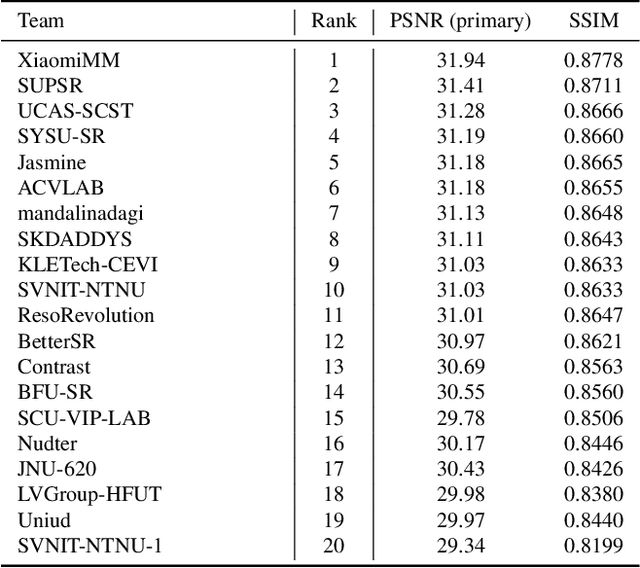
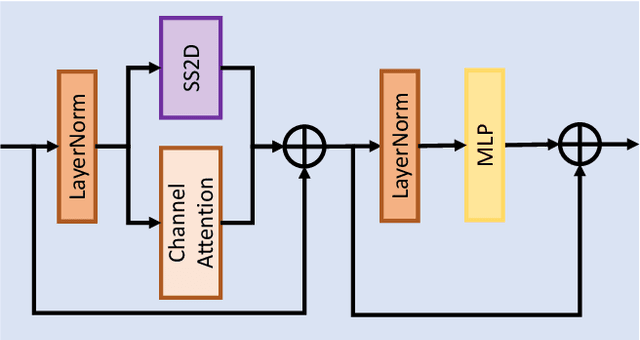
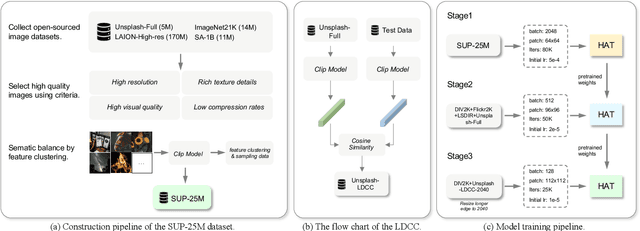
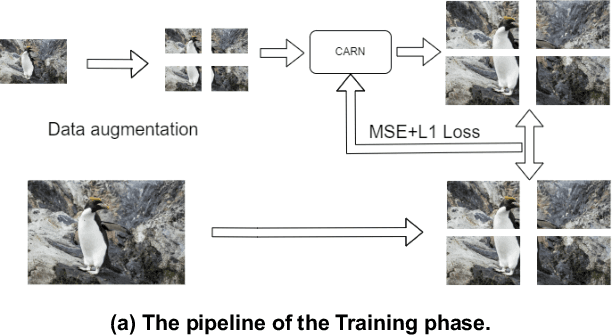
Abstract:This paper reviews the NTIRE 2024 challenge on image super-resolution ($\times$4), highlighting the solutions proposed and the outcomes obtained. The challenge involves generating corresponding high-resolution (HR) images, magnified by a factor of four, from low-resolution (LR) inputs using prior information. The LR images originate from bicubic downsampling degradation. The aim of the challenge is to obtain designs/solutions with the most advanced SR performance, with no constraints on computational resources (e.g., model size and FLOPs) or training data. The track of this challenge assesses performance with the PSNR metric on the DIV2K testing dataset. The competition attracted 199 registrants, with 20 teams submitting valid entries. This collective endeavour not only pushes the boundaries of performance in single-image SR but also offers a comprehensive overview of current trends in this field.
SDXS: Real-Time One-Step Latent Diffusion Models with Image Conditions
Mar 25, 2024Abstract:Recent advancements in diffusion models have positioned them at the forefront of image generation. Despite their superior performance, diffusion models are not without drawbacks; they are characterized by complex architectures and substantial computational demands, resulting in significant latency due to their iterative sampling process. To mitigate these limitations, we introduce a dual approach involving model miniaturization and a reduction in sampling steps, aimed at significantly decreasing model latency. Our methodology leverages knowledge distillation to streamline the U-Net and image decoder architectures, and introduces an innovative one-step DM training technique that utilizes feature matching and score distillation. We present two models, SDXS-512 and SDXS-1024, achieving inference speeds of approximately 100 FPS (30x faster than SD v1.5) and 30 FP (60x faster than SDXL) on a single GPU, respectively. Moreover, our training approach offers promising applications in image-conditioned control, facilitating efficient image-to-image translation.
Swift Parameter-free Attention Network for Efficient Super-Resolution
Nov 21, 2023



Abstract:Single Image Super-Resolution (SISR) is a crucial task in low-level computer vision, aiming to reconstruct high-resolution images from low-resolution counterparts. Conventional attention mechanisms have significantly improved SISR performance but often result in complex network structures and large number of parameters, leading to slow inference speed and large model size. To address this issue, we propose the Swift Parameter-free Attention Network (SPAN), a highly efficient SISR model that balances parameter count, inference speed, and image quality. SPAN employs a novel parameter-free attention mechanism, which leverages symmetric activation functions and residual connections to enhance high-contribution information and suppress redundant information. Our theoretical analysis demonstrates the effectiveness of this design in achieving the attention mechanism's purpose. We evaluate SPAN on multiple benchmarks, showing that it outperforms existing efficient super-resolution models in terms of both image quality and inference speed, achieving a significant quality-speed trade-off. This makes SPAN highly suitable for real-world applications, particularly in resource-constrained scenarios. Notably, our model attains the best PSNR of 27.09 dB, and the test runtime of our team is reduced by 7.08ms in the NTIRE 2023 efficient super-resolution challenge. Our code and models are made publicly available at \url{https://github.com/hongyuanyu/SPAN}.
 Add to Chrome
Add to Chrome Add to Firefox
Add to Firefox Add to Edge
Add to Edge